Rover Engines
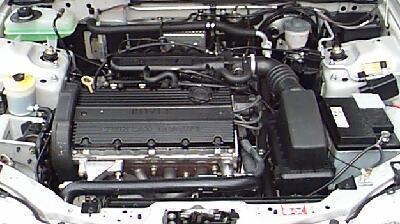
Rover also built petrol engined portable fire pumps for the Royal Navy. Four cylinder, hand-cranked start; sailors are big strong lads!

Rover also built petrol engined portable fire pumps for the Royal Navy. Four cylinder, hand-cranked start; sailors are big strong lads!
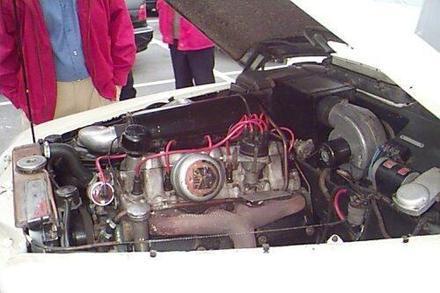
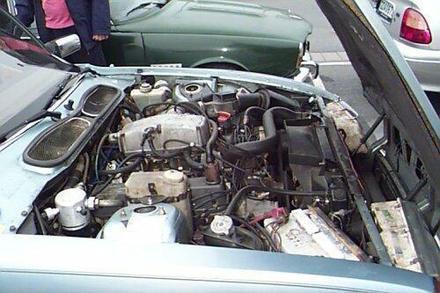
Several SD1 2000cc arrived in New Zealand for selling in the 2nd. hand car yards. I believe these cars came from South Africa. It's powered by a BMC Austin motor. This motor is lost in the engine bay, there is space along side the motor for an oversize mechanic along with his tool chest to work. I may be wrong about the cc. rating.
Roy Sinclair
The SD1 2000 used the Leyland 'O' series OHC engine, also used in the later Morris Marina and Austin Princess. It was fitted with twin S.U.'s and a tubular manifold, and was available in manual or auto. There are a fair few still around in the U.K. but I believe they are quite underpowered. They are however very cheap, and I have heard of people converting them to V8, which is apparently not too difficult.
Regards John
South African SD1's came in only two engine sizes: the orthodox V8 3500 and a straight-6 with a 2600 capacity. The latter engine was made using Australian tooling shipped over to SA when Leyland closed down in Oz. The first application of the 2600 unit was in a South African derivative of the Austin Marina (a bit of a Q-ship that!) in around 1977. I don't know what vehicles it originally went into in Oz thoogh. A good mate ran a 2600 SD1 and was very pleased with its performance and reliability. Engine access for maintainence was outstanding. Overall a powerful, tractable and bullet-proof iron lump - just as things should be.
Cheers Keith
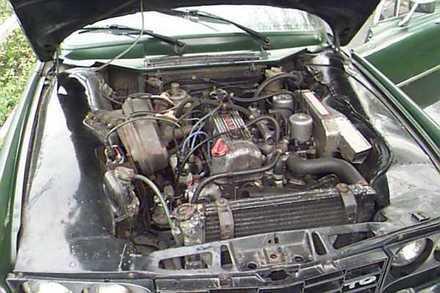
The P7 engine was made up of 1.5 P6 engines welded together. The nose of the P6 had to be lenghtened in order to accomodate the longer engine but the car was apparently very fast (140 mph). This was abandoned when the V8 turned out to be a better fit (engine bay was already - almost - large enough).
Not sure about carbs etc but doubt that it had fuel injection. Rover did equip at least one P6 with the same Lucas fuel injection as the Triumph 2.5PI for testing. It was supposed to be more flexible than the 2000TC but (perhaps because of reliability) did not make it into production.
The Triumph 2.5PI engine in a redesigned version ended up as the 2600 engine in the SD1.

The engine on the pictures here is the Volvo Penta MD22 marine engine.
The design is based on the Perkins Prima 2.0 litre direct injection engine, which was used in the Montego and Maestro and shares many common components with them. It was also used in various taxis and Leyland Daf products.
The Rover L Series 2.0 litre direct injection engine was based on the Prima engine and also shares many common components. This is the engine that is currently used in the Rover 25 and 45. It was also used in the early Freelanders.
I believe the engine is still made by Perkins in Peterborough UK and shipped to Sweden for Volvo Penta to add external items (alternators etc.) and they supply it as a Volvo Penta engine.
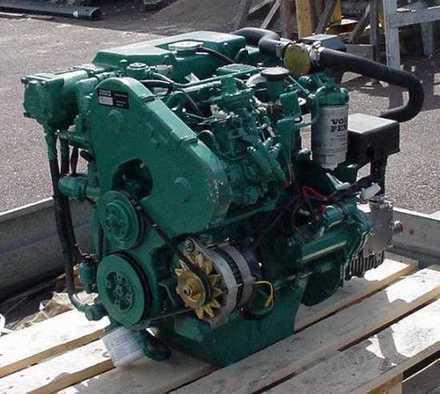
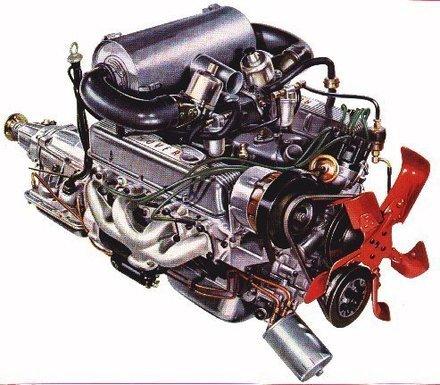
Specifications:
8 cylinders, bore: 88.9 mm, stroke: 71.12 mm, cubic capacity: 3.528 c.c, compression ratio: 10.5:1, B.H.P (DIN): 146 at 5.000 rev/min, torque (DIN): 27.8 Mkg at 2.500 rev/min. Twin S.U. carburettors.
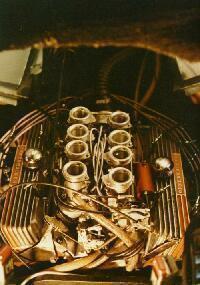
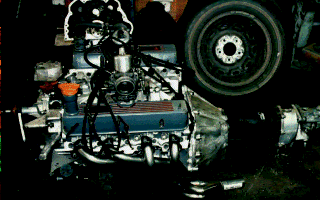
No Rover P6 och SD1 were factory equipped with the V8-engine bored to anything else than 3.5 litres.
But there are several examples of tweaked 3.5 engines, in P6's and SD1's, in the UK and around the world. The most common modification is the 3.9 engine, but there are quite a few 4.5 and 4.6 engines too.
The 3.9 engine is said to be an excellent engine, very flexible, that pulls like a mad thing from 1000 rpm upwards, with no further tuning.
When I put the 3.9 and 5 speed into the P6 it was originally an auto so I needed the pedal box, clutch parts, fluid resevoir etc. I also had to swap the sump, mounting brackets, water pump, oil filter, rocker covers (SD1 filler pipe was too tall), carbs and linkages, air filter, water pipes etc. A hole needs to be cut for the clutch actuating level to protrude into the engine bay. Take care when doing this as it is virtually impossible to tell where the thing will end up due to the awkward working position and some complex angles. I got it wrong first time and had to weld the hold up. If you can take a good look at a 3500S first for guidance. I didn't !
The senders for all the guages were different except the temperature so this also needed sorting as did things which I hadn't thought about until I started such as the speedo cable and recalibration and reversing light. The auto also only starts in Neutral or Park and it took some time figuring out why nothing worked until I realised that this was handled by a switch on the old auto box! I just connected the old wires together!
The exhaust pipe fouls on the clutch slave cylinder if you use an original P6B auto down pipe but this can be 'adjusted' with a big hammer. The SD1 headers don't fit so P6 ones have to be used - not so efficient. Apparently there are some good aftermarket tubular ones? You also neeed to make up a new mount for the exhaust near the gearbox.
The gearbox just fits with help from a big hammer where clearnce is tight. I found that the remote gear shift mechanism can be adjusted slightly to move it down a little to give a little more clearance (1/2 inch max) without causing any problems by slipping in some ground down thick washers at the gearbox end.
New gearbox mounts are required - I made some by cutting up the SD1 mounts and P6 mounts and bridging the gap with some suitably thick metal I had lying around. I didn't quite get it right first time as the whole thing should be rubber mounted and not transmit noise to the bodywork. However the rubber gives under hard acceleration and metal meets metal in my setup leading to noisy acceleration. I should have left more clearance - its more annoying than anyting else and is fine in normal driving.
The prop shaft from the Auto bolted straight on the 5 speed manual, however I had to pull the moving end right out so it is almost at its limit. I am told that there are many different length P6 props but I could only find one length at the breakers all of them the same as mine! It seems OK and I have done about 15,000 miles since the conversion.
The SD1 motor does not have a mechanical fuel pump which my P6 did so I had to fit an electrical one. I have fitted a cheap 'SU Ticker Type' pump which was fitted to numerous British Classic Cars and this works fine until I go racing then fails to deliver enough pressure about 3/4 the way down the 1/4 mile. This cost about #25. I may well fit a Facet Red Top pump in the near future. Oh yes - one has to block off the return petrol pipe otherwise the pump ticks all the time! I have retained the reserve tap but had to move the pipes and valve as it wanted to ocupy the same space as the clutch master cylinder.
The clutch master cylinder was probably the most tricky bit. When I purchased all the bits over a number of months I did not know how it would all fit together. I had to make up an actuating lever from the pedal extension to the mastercylinder as this was missing in the stuff I had. As my P6 was series 1 which had never been made as a manual none of the bracketry existed for mounting the master cylinder. This took some figuring out as I was not sure how it should fit. I guess this took me about 5 or 6 hours to get right.
It sounds a lot of work but it only took 3 days solid during the summer and the results are amazing. A P6 that really goes well. Watch out though as it shows up problems in the rest of the drive train which get hidden from you in an Auto. The bushes in the rear suspension were all shot and this made the gearchange very knocky until I replaced them.
I am intending to put this into a step by step set of instructions on my Web page as soon as I get a chance. I hope that it helps others doing the same job and would be glad to lend advice if required.
Now then what about that 4.6 - what are the differences?
Simon Warrick
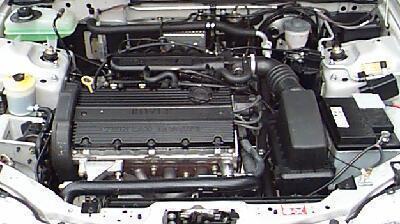
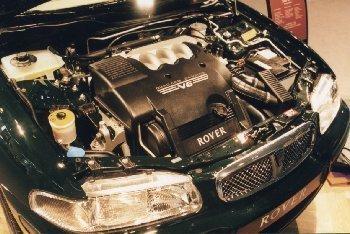
Kia is selling a minivan with the KV6 engine.
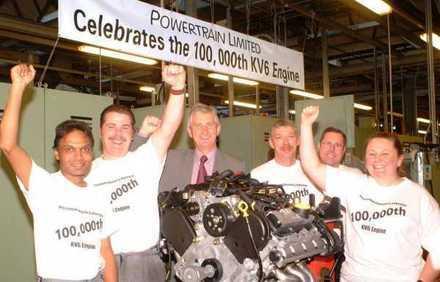
KV6 engine number 100 000 was produced at Powertrain Ltd in Longbridge on October 31st 2001. Powertrain is a MG Rover Holdings Ltd company for producing engines and gearboxes.
35 000 KV6-engines will be built during 2001. Sales of the engine has increased and production has been increased from 900 per week to 1 400 units per week.
The KV6 engine is delivered in the Rover 45 and 75, in MG ZT and ZS as well as in Land Rover Freelander. Sales to external customers, Lotus and Caterham, has also increased.
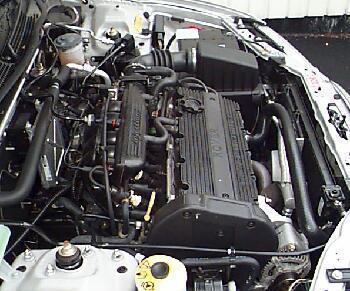
In 1989 Rover introduced a new, advanced four cylinder engine design. Lightweight and with high standard power output, the K-series also introduced a "through-bolt" design that is unique.
Initially available in 1.4 litre 8-valve SOHC carburetted and 16-valve single-point fuel-injected DOHC forms, the range has expanded to include 1.1, 1.4, 1.6 and 1.8 litre versions, most of which use a multi-point fuel injection system controlled by a Motorola/Rover "MEMS" engine management system.
The K-series is of all aluminium construction. On the modern multi-point engines, the emphasis on lightness is carried over to the inlet manifold and plenum chamber, which have been specially developed in plastics by Dupont.
The engine block can be found in two castings: the early one uses fully "wet" linings and pre-dates the introduction of the first multi-point injection engines. The second block type is the so-called "damp" liner block and is used in the later engines with different liners to provide changes in bore size for the different engine capacities. (Both bore and stroke are varied to obtain all engine sizes).
standard, based on the original 1.4 litre engine, which is used for all "standard" engines.
VVC (Variable Valve Control) head with larger ports and valves and special provision for the Rover designed valve timing system.
VHPD (Very High Power Derivative) head, which is similar to a VVC head without the valve timing modifications.
1.1 - ? - 60 ps
1.4 - carb - 75 ps
1.4 - SPi - 93 ps
1.4 - MPi - 103 ps
1.6 - MPi - 113 ps
1.8 - MPi - 118 ps
1.8 - VVC - 138 ps
1.8 - VHPD - 190 ps (*)
* The VHPD is a racing engine developed by Rover originally for the one-make MGF series.
Power outputs are approximate and may vary between sources. The different applications of the engine can also lead to small variations in the power output - for example, the 1.8 VVC unit in the Land Rover Freelander may have been tweaked for torque rather than purely for peak power.
Note also that manufacturers tend to be conservative when quoting power outputs for various reasons. Rolling-road testing has indicated that a typical 1.8 litre engine produces in excess of 120 PS when in good condition.
The K-series is used throughout the Rover range, from the 1.1 litre Rover 25 to the 1.8 VVC MGF.
It has also found favour with Lotus for the Elise and by kit-car manufacturers including Caterham in their Lotus-inspired 7 and the newer 21.
The go-kart handling of the Lotus Elise and the development by Caterham of its "K" powered Sevens has triggered an astonishing growth in aftermarket tuning options for the K-series. Although many are directed specifically at the Elise and MGF, which share a mid-engined layout and complete drive-train, the development work involved is applicable to most of the engines, although later-block engines offer more flexibility.
Packages range from simple "fast road" cams offering perhaps 10-15 more PS to major makeovers involving direct-to-head throttle bodies, wild "racing" cams, solid lifters, forged pistons and rods, full balancing, new crankshafts, big valves, heavily ported cylinder heads and specially developed exhaust manifolds. The end result? Well in excess of 100 bhp per litre, with 1.8 litre engines reliably reported to be running to 8000rpm and 220 bhp.
David Bass
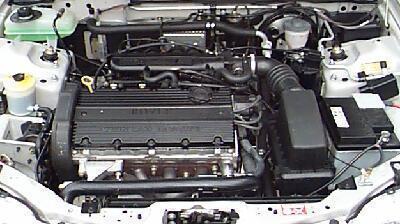
In 1911 Rover started to produce motorcycles again
In March 2008 the heavily indebted Ford Company sold their British prestigious carmakers Jaguar and Land Rover along with the Rover Brand, the Daimler brand and the Lanchester brand.
Read more